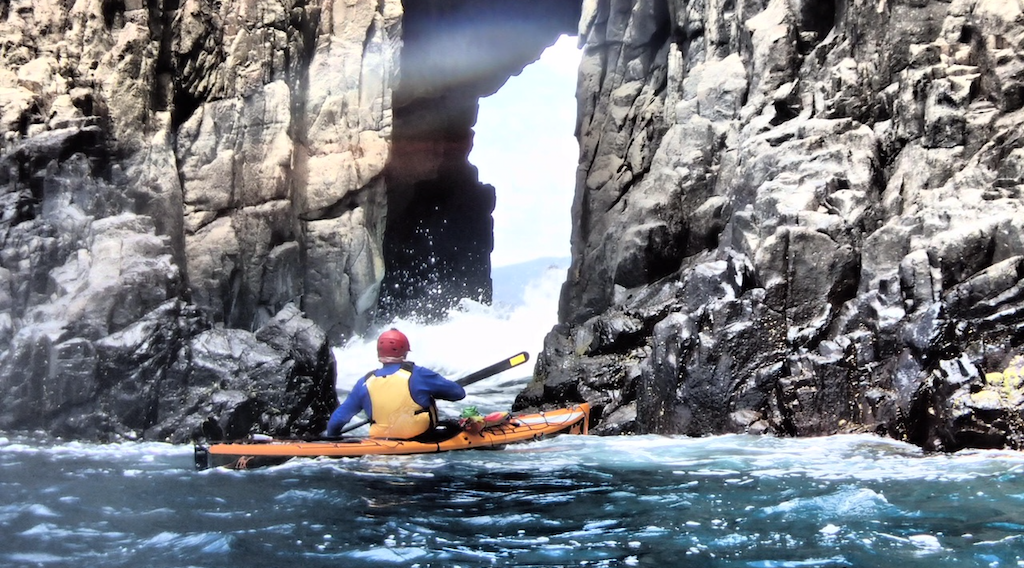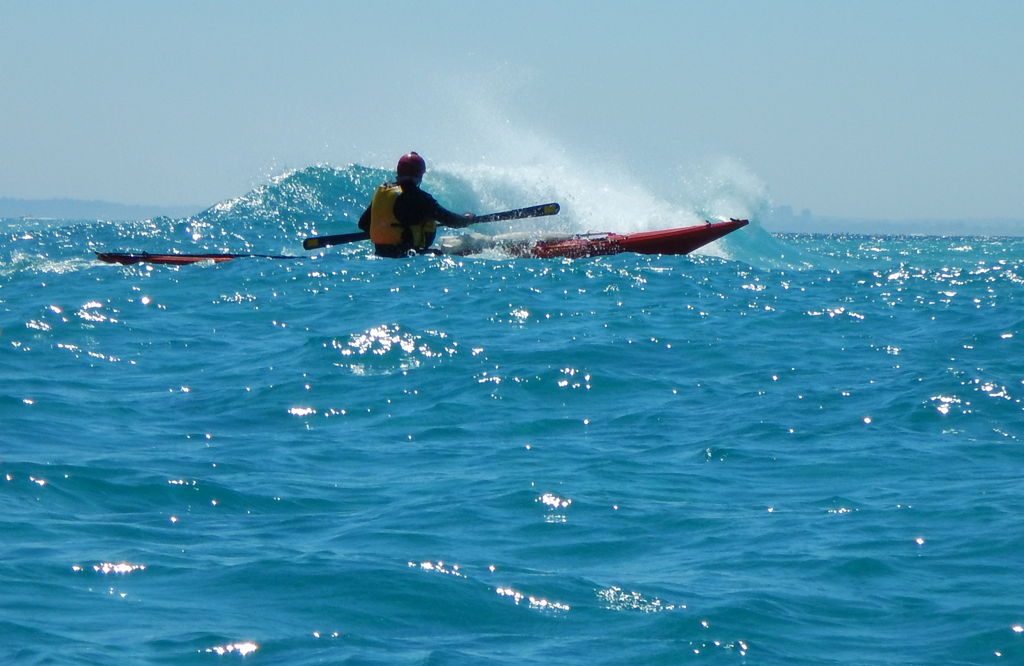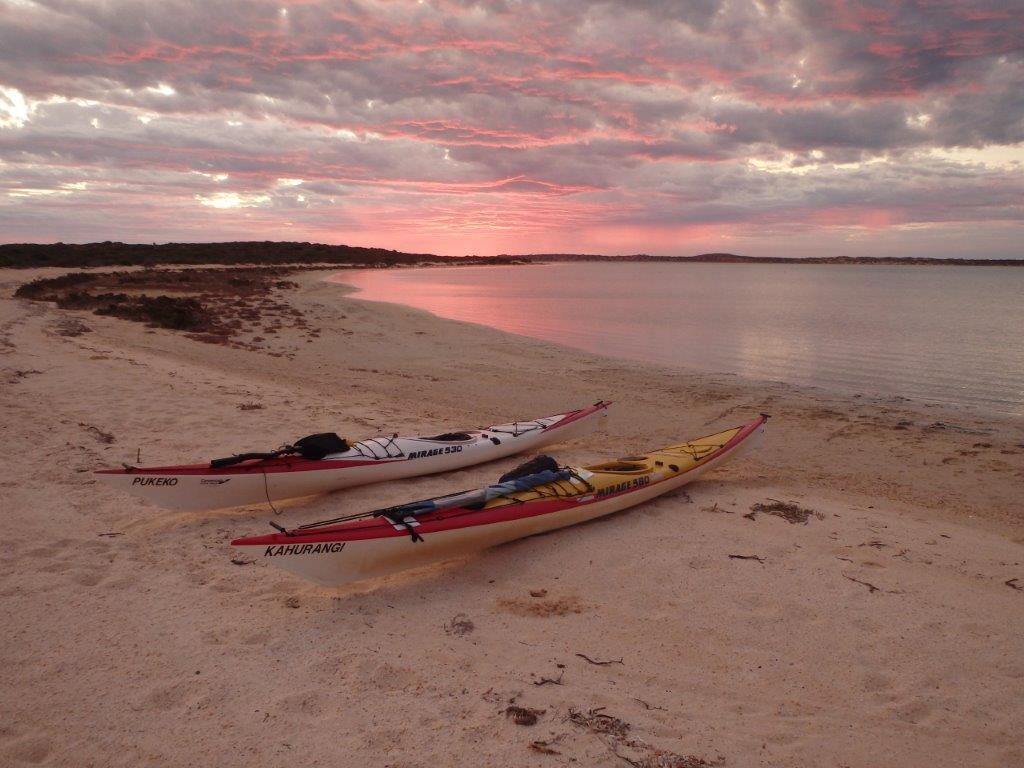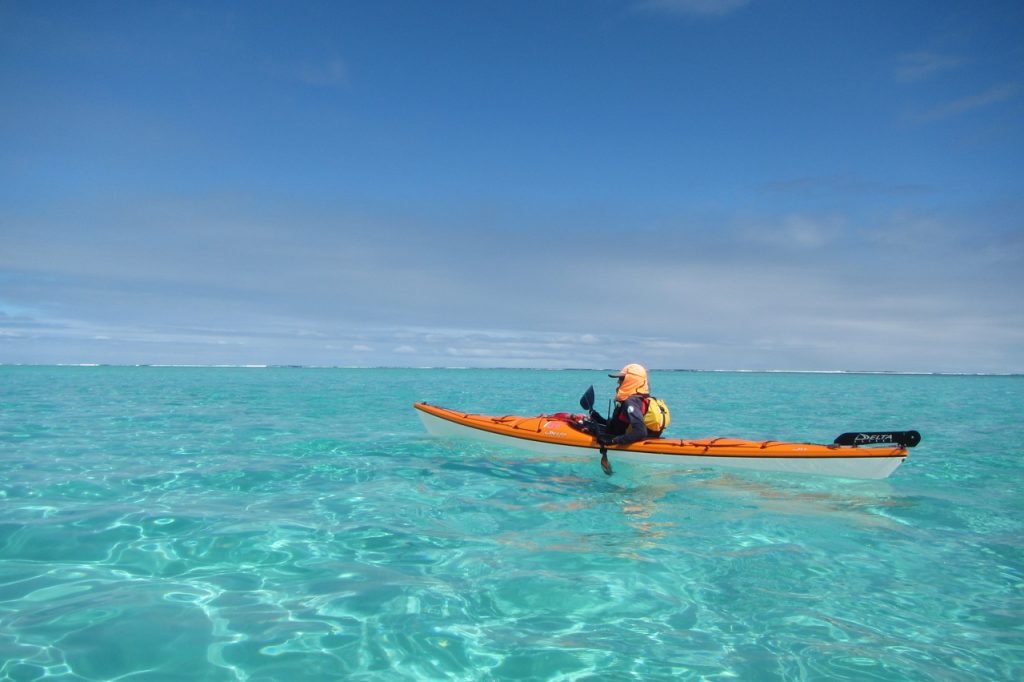By Sandy Robson
I attended a valuable presentation at the 2012 NSW Sea Kayak Club Rock n Roll sea kayak symposium and also was lucky enough to participate in a search and rescue exercise with a helicopter searching for us. I am now reviewing what I am carrying in my PFD for signalling and I think you will find this information interesting.
Firstly, at the presentation there were 4 guests. A representative from the Australian Maritime Safety Authority (AMSA), 2 blokes from the local volunteer marine rescue (VMR) and a helicopter pilot who regularly conducts search and rescue (SAR) for people in the water. If you haven’t a clue what AMSA do then let me tell you, this bloke is the one who sits in the rescue coordination centre (RCC) in Canberra and puts everything into action when you set off your PLB or EPIRB device or if you are reported missing. He ran through a few actual situations that have occurred and laid it on the line that really, you are pretty stupid if you do not have a PLB or an EPIRB. The following day I participated in a search and rescue (SAR) exercise where we set off a training EPIRB whilst out on the water in the dark before dawn. The helicopter came looking for us and we did a night time search scenario and a day time scenario setting off and using various signalling and position indicating tools. It was valuable training for us in our kayaks and for the helicopter search crew too.
Here are my conclusions.
1. Carry a PLB mounted on the shoulder of your PFD or an EPIRB with a tether.
If you are going to have a PLB then the advice is that it must be mounted on your shoulder so that you can deploy the antennae and then attach it back into a shoulder mounted pouch so you have good communication with the satellites. PLBs don’t float and they are not going to work antennae down and you will probably be needing your hands free. Shoulder mounting high on your PFD is best for optimum performance.
Of course an EPIRB is much more successful than a PLB because it floats. If you carry an EPIRB figure out a way to tether it to your craft or to you because it is a bummer when they find the device but not the person with it.
Actually, a mate of mine, paddler Paul Hayward and I had been discussing PLB mounting pouches before the symposium and he has made me a pouch to mount my PLB on my PFD, so the AMSA bloke just confirmed that what Paul designed is spot on. Right are two photos showing the pouch that my friend designed.
Note – some PLB devices sold overseas and available online are not able to be programmed for use in Australia, so buy your device in Australia and save yourself the hassles and the advice on SPOT messenger was that it is great to let your friends know what you are up to on expedition with OK messages, but not reliable or recommended by AMSA for use in an emergency.
2. Keep the Registration Information for your PLB/EPIRB up to date with AMSA records.
So, you set off your PLB or EPIRB and what they are going to do is establish your position and check what you have registered online (http://beacons.amsa.gov.au/register_now.html) with your device (e.g. craft type, registered trips, emergency contact numbers that you have listed etc). Then they are going to start telephoning you and people on your list to see if you are indeed out kayaking and in distress. Sometimes these devices go off accidentally and they will call you to establish if a rescue is indeed required.
3. Have appropriate people as your emergency contacts.
In your emergency contacts registered for your device you should list people who are likely to know your whereabouts and your kayaking plans. You can update your device registry at any time. There is no point to list your mum, unless she knows where you are kayaking.
4. VHF Radio
Let’s say you are out there bobbing around in the water. Maybe with or without a kayak. Your PLB has been set off, now what? Be prepared for a wait! AMSA only own 5 rescue helicopters. They can also draw on resources from other organisations such as the military, but this all takes time to coordinate. If you are close to a Volunteer Marine Rescue facility or other boats then these are your next option whilst waiting for that helicopter. On weekends it may take 1.5 hours for the helicopter to deploy, so I hope you are dressed appropriately. Your next line of defence is your VHF radio. Like the PLB/EPIRB you should use this at the earliest time that things are looking like going pear shaped. Do not wait until it gets dark! Get on the radio and call for assistance. There is also a new feature available on some radios where you can read your position coordinates off the radio screen– handy in an emergency call I think. If you have a VHF that is DSC capable then you can transmit your position at the touch of a button and the rescue chopper is fitted out to receive this message. Craft in the area and VMR will also get an alert tone broadcast over their radio when you push the distress button.
5. Signalling your Position
Julian, the helicopter pilot explained to us how difficult it is to see a kayaker in the water, let alone, a person without their kayak. The things that will help you get spotted are:
- Strobe mounted high on the shoulder of your PFD: In perfect conditions this was spotted from 2NM by helicopter SAR wearing night vision goggles (NVGs). This was double the range of a head torch (visible at 1NM).
- Sea marker Dye will make a large green mark in the water that they spot easily from the air.
- VHF Radio to talk to the helicopter – that way you know for sure if they have seen you or not and you can tell them when you hear and see them approaching.
- Flares – the Orange smoke canister was very effective and long lasting and hands free for day time use. Red hand helds and pen flares were great in the dark but short lived.
- Laser Flare – never expires or runs out and was very very effective – $100 well spent I thinkhttp://www.greatlandlaser.com/rescue-laser-light.html
- Signalling Mirror – could be used, I saw a few people with a CD stashed in their PFD or on the kayak for this purpose.
6. Other Info:
- The helicopter is looking for you with Night Vision Goggles so go to town with all the light sources that you have.
- The Helicopter has a big light called the ‘night sun’ – you are going to hear the helicopter coming and when they turn on the Night Sun it feels very reassuring! Radio them on channel 16 and tell them when you hear and see them.
- Tassie does not have a rescue helicopter, it flies from Melbourne, so you will be sitting around for some time down there – Dress appropriately…In the presentation they told us a pair of kayakers waited around 6 hours to be rescued on the west coast of Tassie once.
- Log on with VMR before you paddle, then they know where to look and who to look for, and have a ‘let someone know before you go’ system in place.
- When the helicopter finds you they may drop a very large flare into the water close by so that they do not lose track of where you are. This flare is self-scuttling, that is, it blows up when it is done, so do not paddle over to it, keep a good distance away e.g. 50-100metres.
- When they are searching for you AMSA have technology to generate a drift model and develop a search area. This can then be provided to VMR and police for use when coordinating the search.
- If you have an old PLB or EPIRB to dispose of, do not put it in the rubbish bin! These guys are having a lot of time wasted digging up transmitting PLBs from rubbish dumps. Old beacons can be disposed of at Battery World (http://batteryworld.com.au/store-list ) free of charge.
- Read this helicopter pilot report (link).
- RCC info that you should know:http://www.amsa.gov.au/Search_and_Rescue/
- A Buoyant Orange Smoke canister (like the one in the water shown at right) is ideal for sea kayakers because you set it off and then throw it in the water, leaving your hands free to get on the VHF, brace in swell etc. They are acceptable instead of 2 orange handheld flares. These can be purchased in Perth from Fendercare Australia (in Fremantle) for $44 plus GST (at the time of writing this article). The minimum spend at Fendercare for cash sales though is $100, so you could team up with another kayaker to purchase ( http://www.fendercare.com.au/). Wilson Marine in South Freo ‘can also order the canisters in for you. RFD at Rous Head is another supplier that you could try. I always have one of these smoke canisters in my day hatch.






